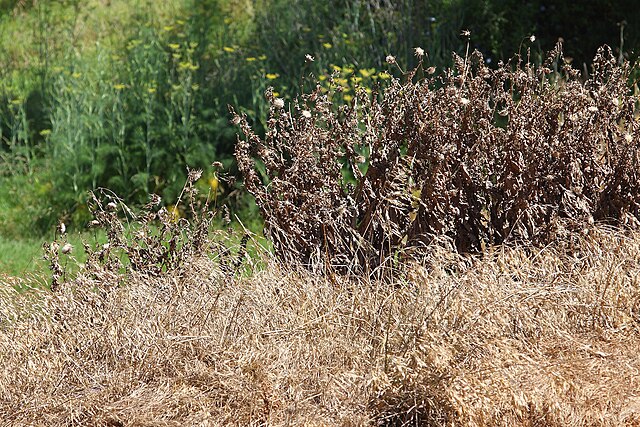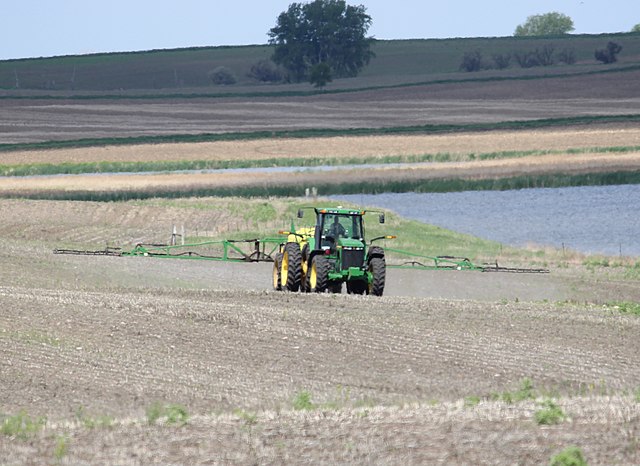Herbicides, also commonly known as weed killers, are substances used to control undesired plants, also known as weeds. Selective herbicides control specific weed species while leaving the desired crop relatively unharmed, while non-selective herbicides kill plants indiscriminately. The combined effects of herbicides, nitrogen fertilizer, and improved cultivars has increased yields of major crops by 3x to 6x from 1900 to 2000.
A field after application of a herbicide
Weeds controlled with herbicide
Herbicides being sprayed from the spray arms of a tractor in North Dakota.
Handicapped children in Vietnam, most of them victims of Agent Orange, 2004
A weed is a plant considered undesirable in a particular situation, growing where it conflicts with human preferences, needs, or goals. Plants with characteristics that make them hazardous, aesthetically unappealing, difficult to control in managed environments, or otherwise unwanted in farm land, orchards, gardens, lawns, parks, recreational spaces, residential and industrial areas, may all be considered weeds. The concept of weeds is particularly significant in agriculture, where the presence of weeds in fields used to grow crops may cause major losses in yields. Invasive species, plants introduced to an environment where their presence negatively impacts the overall functioning and biodiversity of the ecosystem, may also sometimes be considered weeds.
Weeds growing in the cracks of a concrete staircase (Epilobium roseum, Chelidonium majus, Oxalis corniculata, Plantago major)
A dandelion is a common plant all over the world, especially in Europe, Asia, and the Americas. It is considered a weed in some contexts (such as lawns) but not others (such as when it is grown as a vegetable or herbal medicine).
Invasive Canada Goldenrod as a roadside weed in Poland
Australia, 1907: Cattlemen survey 700 carcasses of cattle that were killed overnight by a poisonous plant.








